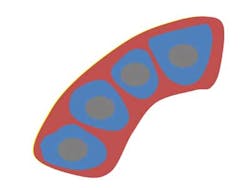Literature review: Emergence profiles for dental implants
The term “emergence profile” was first used in 1977 by Stein and Kuwata to describe tooth and crown contours as they traversed soft tissue and rose toward the contact area interproximally and height of contour facially and lingually. In 1990, a photographic analysis of natural teeth by Croll confirmed that most emergence profiles are relatively straight as opposed to convex or concave. If a restoration introduced a convexity or concavity where it didn’t belong, the unnatural contour might trap plaque or otherwise disrupt the gingiva.
RELATED |The platform is showing! Prosthetic management of implants placed too far coronally
RELATED |Key concepts in esthetic gingival management: focusing on tooth preparation
Since the introduction of dental implants, there has been renewed interest in the concept as dentists attempt to replicate not only the crown but the entire tooth anatomy. Let us consider the cross-section of an implant to the cross-section of the tooth it replaces. The circular implant platform must develop into a variety of shapes as it emerges from the gingiva: triangular, rhomboidal, etc.
The original concept as outlined by Stein and Kuwata holds true for implants. Unnatural emergence contours may trap plaque and be difficult to maintain hygienically. Additionally, the human eye may detect a final restoration in the esthetic zone that has not faithfully reproduced what nature originally provided.
Neale and Chee in 1994 were perhaps the first to describe a technique for surgically sculpting soft tissue around an implant to more closely mimic nature. More recent published technique describes modifying provisional crowns incrementally rather than a surgical approach. While there is no clear consensus on how to best create an anatomical emergence profile for an implant restoration, a careful review of the literature will aid the dentist in developing his/her own technique.
Jameson LM, Malone WFP. Crown contours and gingival response. J Prosthetic Dent 1982;47:620-624.

